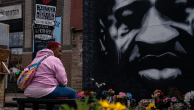
Views of Race, Policing and Black Lives Matter in the 5 Years Since George Floyd’s Killing
Americans have expressed skepticism that attention to racial issues after Floyd’s killing led to changes that improved Black people’s lives.
Numbers, Facts and Trends Shaping Your World
All
Publications
Americans have expressed skepticism that attention to racial issues after Floyd’s killing led to changes that improved Black people’s lives.
Most Asian adults in the U.S. have been treated as a foreigner or experienced incidents where people assume they are a “model minority.”
As we mark 10 years since the #BlackLivesMatter hashtag first appeared on social media, here are eight facts about the Black Lives Matter movement.
More than 44 million #BlackLivesMatter tweets from nearly 10 million distinct users currently exist on Twitter today. Over half of all existing tweets that include the #BlackLivesMatter hashtag were posted from May to September 2020.
Today, 51% of U.S. adults say they support the Black Lives Matter movement – down from 67% in June 2020. A majority of Americans say the increased focus on race and racial inequality in the past three years hasn’t led to improvement for Black Americans.
In 2019, 40% of Americans identified as a race and ethnicity other than non-Hispanic White. Their combined share is predicted to increase to over 50% by 2044.
55% of U.S. adults now express at least some support for the Black Lives Matter movement, down from 67% in June.
Six-in-ten black adults say it is important for houses of worship to address “political topics such as immigration and race relations.”
Most Americans (65%) – including majorities across racial and ethnic groups – say it has become more common for people to express racist or racially insensitive views since Trump was elected president.
About six-in-ten U.S. adults say that the growing racial and ethnic diversity in America makes the country a better place to live.
Notifications